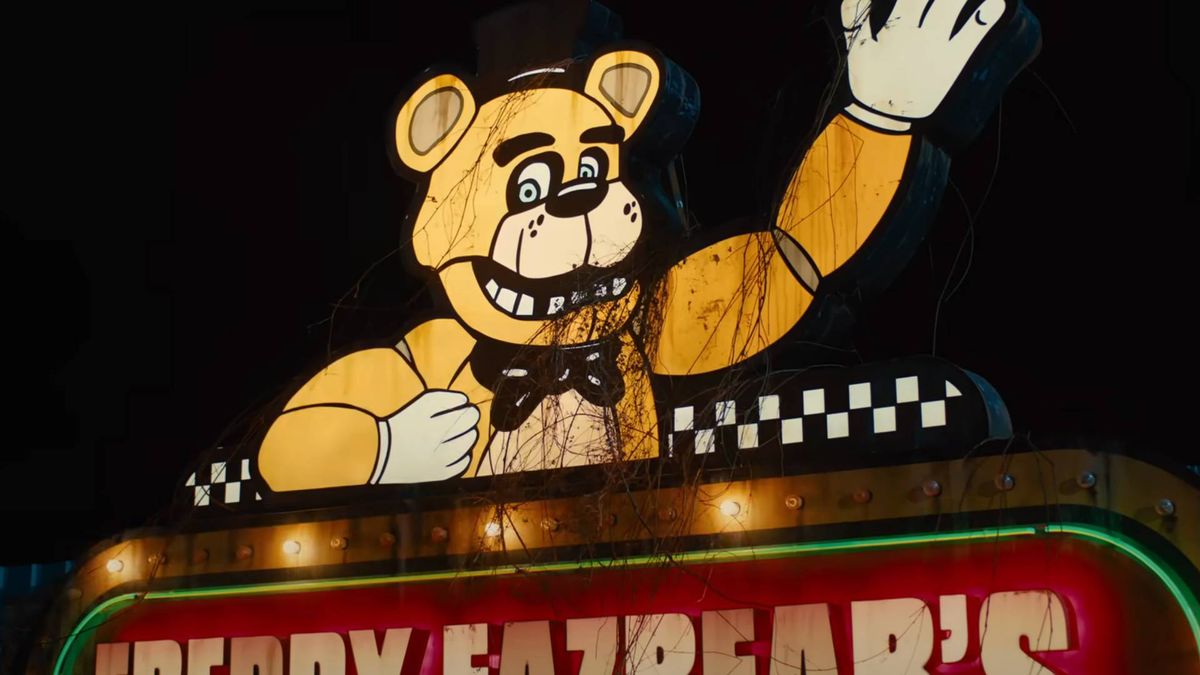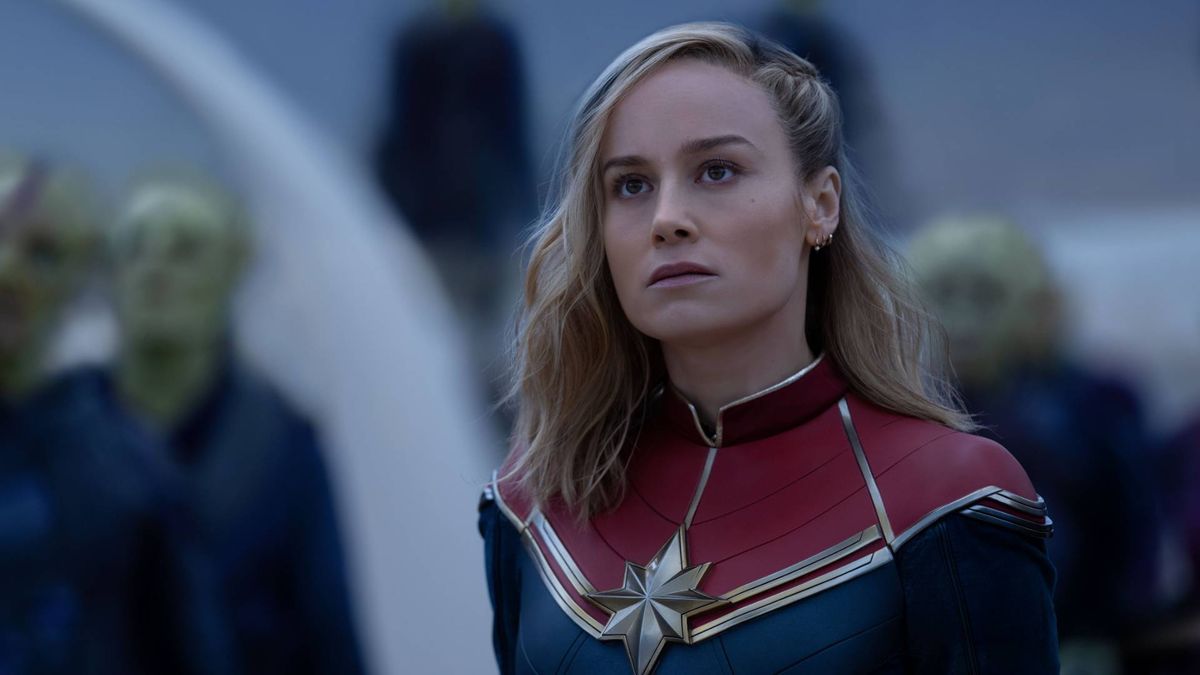Doctor Strange in the Multiverse of Madness is now streaming on Disney Plus, meaning a whole new audience is meeting Gargantos, the cyclopean, tentacled monster attacking New York City in one of the film’s early action scenes.
“Who the heck is Gargantos?” you may be asking, as all appearances seem to indicate that the monster should be Strange’s classic multiversal enemy Shuma-Gorath – not ‘Gargantos’. And the thing is, for all intents and purposes, the MCU’s Gargantos is a renamed adaptation of the more well-known Shuma-Gorath.
What do we mean? Well, for one thing, Garagantos is an extremely obscure Marvel Comics monster, a mindless sea creature who fought Namor the Sub-Mariner way back in the ’60s. And for another, the original seeds of the monster’s MCU appearance seem to have been sown in Disney Plus’ 2021 animated MCU series What If…? including the premiere episode and the Doctor Strange-centric installment, tying the villain directly to the Multiverse, which is traditionally Shuma-Gorath’s domain.
And it’s this mystical/multiversal aspect that separates Shuma-Gorath from Gargantos, and which is a big part of how he became Gargantos in the MCU.
That begs the question, why would Marvel Studios dredge up a much lesser-known villain, when it’s got a perfectly good Doctor Strange adversary in Shuma-Gorath in its catalog?

The answer is fairly simple. According to a statement made to ComicBook by Heroic Signatures, the owners of Conan the Barbarian and his related characters prior to the film’s release, they own the rights to the name ‘Shuma-Gorath,’ and Marvel Studios simply didn’t ask if they could use it in the movie.
The name ‘Shuma-Gorath’ comes from a prose fantasy story written by Conan creator Robert E. Howard that wasn’t published by Marvel. In fact, the story and name predate the Marvel Universe entirely. The character’s visual likeness, powers, personality, and backstory are all the creations of writer Steve Englehart and artist Steve Brunner for Marvel, however, which we detail below.
Shuma-Gorath has already been used in other media adaptations by Marvel, including video games, and names can’t be trademarked (meaning they can be shared by multiple characters with different owners, depending on the context of how they’re used), but it seems that were issues either preventing a unilateral use of the name by Marvel, or the studio just wanted to avoid the whole hassle and chose a name that is wholly owned by Marvel Comics.
That said, the creature called Gargantos in the film is heavily visually adapted from Shuma-Gorath’s Marvel Comics appearance. We’ll explain Shuma-Gorath’s Marvel Comics history, and how he became Gargantos in the MCU.
Who is Gargantos?

The Marvel Comics’ history of Gargantos is remarkably brief. The monster, which resembles a one-eyed, green octopus, fought Namor the Sub-Mariner way back in 1969’s Sub-Mariner #13, created by writer Roy Thomas and artist Marie Severin.
In this story, Gargantos is a sea monster under the control of the people of Lemuria, a rival undersea kingdom of Namor’s home Atlantis, which, like Atlantis itself, was once a surface city.
The fact that the original comic book Gargantos comes from Lemuria may be the one aspect of his comic book history that could come to the MCU, as, in Marvel lore, Lemuria was once the surface city of the Deviants, the arch-enemies of the Eternals (and potential genetic cousins of mutants) before it was sunk beneath the sea by the Celestials.
With the Celestials, Deviants, and other aspects of their shared mythos making it to the MCU in 2021’s Eternals film, a connection to the lore of the Deviants could be a factor in Gargantos coming to the MCU, even if the larger aspects of his story seem to come from Shuma-Gorath.
Speaking of which…
Who is Shuma-Gorath?

The cosmic horror known to mankind as Shuma-Gorath made its debut in 1973’s Marvel Premiere #10 (opens in new tab), after being name-checked a few issues earlier. Created by writer Steve Englehart and artist Frank Brunner, Shuma-Gorath actually takes its inspiration from two non-comic book literary sources – H.P. Lovecraft’s Cthulhu Mythos, and Robert E. Howard’s Conan the Barbarian stories.
The two writers often seeded connections between each others’ ideas in their stories, something that plays directly to Shuma-Gorath’s history in the Marvel Universe.
Shuma-Gorath is one of the so-called ‘Multi-Angled Ones,’ a group of eldritch monsters who exist in a space outside Marvel’s Multiverse known as the ‘Cancerverse,’ who enter different realities only to conquer and bedevil them.
The name Shuma-Gorath itself comes straight from Robert E. Howard’s fantasy story ‘The Curse of the Golden Skull,’ while the concept of its appearance is inspired by the description of Lovecraft’s Elder Evils of the Cthulhu mythos. In fact, the name ‘the Multi-Angled Ones’ is taken from a story set in the Cthulhu mythos, ‘The Lair of the Star Spawn’ by August Derleth and Mark Schorer.
Shuma-Gorath’s Marvel history plays up both these connections, as well as the connection between Howard and Lovecraft themselves. And thanks to Marvel Comics having licensed the comic book rights to Conan in the ’70s (as well as in the present day) and adapting that Robert E. Howard story into being a Conan comic, Shuma-Gorath’s story ties directly to Conan the Barbarian’s larger continuity.

(opens in new tab)
In Marvel Comics terms, Shuma-Gorath predates known history, first coming to Earth in a primordial age in which it conquered the planet as a sacrifice-hungry deity. It returned again in Conan’s Hyborian Age, a time period that’s also been incorporated into Marvel history thanks to the aforementioned Conan license, fighting the Barbarian himself.
Shuma-Gorath’s time in the modern Marvel Universe began when the entity tried to manifest himself through Doctor Strange’s mentor, the Ancient One, beginning a rivalry between the eldritch horror and the Sorcerer Supreme that lasts to this day, which has gone so far as Shuma-Gorath trying to magically take over Strange’s body like a parasite, and Strange being tricked into summoning Shuma-Gorath to fight other heroes in the story Infinity (opens in new tab).
The rivalry between Strange and Shuma-Gorath has even grown to encompass Strange’s other key nemesis Dormammu. In fact, Shuma-Gorath and Dormammu’s hatred of each other was central to some of their last appearances in Strange’s title. Shuma-Gorath, in one of its interdimensional conquests, destroyed the homeworld of the anti-magic villains known as the Empirikul, who then invade Earth seeking to eradicate all magic in the Marvel Universe and to kill Shuma-Gorath in the story Doctor Strange: The Last Days of Magic (opens in new tab).
In the story, the Empirikul actually succeeds in eliminating not just magic altogether, but in destroying the Sanctum Sanctorum, leaving Strange nearly powerless as he is forced to collect magical artifacts to rebuild his power. But this also brings the return of Baron Mordo, servant of the Dread Dormammu, who hopes to capitalize on Strange’s weakness and kill him.
It’s revealed that Dormammu and Mordo can keep using magic, despite others like Strange and the Scarlet Witch being totally cut off, by leading the Empirikul to Shuma-Gorath.
Finally regaining his power by the tale’s end, Strange banishes Dormammu to the realm of Shuma-Gorath.
Shuma-Gorath in the Marvel Universe

Shuma-Gorath’s hatred of pretty much everything but itself and the other Many-Angled Ones (and even some of them) means that its rivalries go far beyond just Doctor Strange and Dormammu to many other heroes and villains.
In the story The Thanos Imperative (opens in new tab), the Mad Titan was trapped in Shuma-Gorath’s ‘Cancerverse’ along with Nova after a battle with the Guardians of the Galaxy, though both Thanos and Nova later escaped.
And in the tale Doctor Strange: Damnation (opens in new tab), Shuma-Gorath is one of a multitude of evil beings vying to become the ruler of Las Vegas when a portal to hell opens in the city, losing out to Mephisto.
Over the years, the cosmic horror has faced down the Avengers multiple times, lost a fight to Groot the talking tree, and had its body turned into a bizarre kind of zombie powder by Arnim Zola, who attempted to use his horrid concoction to mind-control the Invaders in the story Invaders Now! (opens in new tab).
It has even wound its way across the Multiverse, thanks to its origins in a dimension that exists wholly outside of its bounds, fighting variants of the X-Men, Thanos, and many more.

(opens in new tab)
One of Shuma-Gorath’s most interesting connections, especially in terms of its MCU potential, comes from one of its earliest appearances away from Doctor Strange, in which the villainous Nicholas Scratch – AKA the son of Wanda Maximoff’s comic book mentor and WandaVision villain Agatha Harkness – summons Shuma-Gorath to fight the Fantastic Four.
Weirdly, Shuma-Gorath also has an ongoing rivalry with Deadpool thanks to both of their proximity to the living embodiment of Death – with the flash-forward story Deadpool: The End (opens in new tab) even including Shuma-Gorath inviting Deadpool to Death’s realm to celebrate the birth of its child (Deadpool RSVP’d “no”).
And of course, we can’t mention Shuma-Gorath’s place in Marvel lore without bringing up its inclusion in the old-school video game Marvel Super-Heroes: War of the Gems, in which many Marvel characters battle for control of the Infinity Stones. This led to its later inclusion as a playable character in the games’ spiritual successor, Marvel Vs. Capcom 3: Fate of Two Worlds (opens in new tab).
These video game appearances made Shuma-Gorath, a previously mostly obscure villain, into an unlikely fan favorite and boosted its profile in Marvel Comics – potentially leading the way to his MCU debut.
Shuma-Gorath … we mean Gargantos … in the MCU

It’s now near certain the unnamed monster that made its MCU debut in animated form in What If…? was similar if not entirely the same as the creature in Multiverse of Madness, and that Strange and Shuma-Gorath’s classic comic book rivalry inspired Shuma-Gorath’s adaptation into Garagantos.
Interestingly enough, as everyone who’s seen the film by now is aware, Doctor Strange in the Multiverse of Madness doesn’t spend a whole lot of time on its version of Gargantos, presenting him as a Multiversal henchman summoned by the Scarlet Witch to capture America Chavez.
Though Gargantos (we’re using the MCU name for this last bit) seems to have been destroyed, this is superheroes we’re talking about, meaning that there’s still room for a more nuanced and in depth version of the character to appear – if and when the time is ever right for such a monster to challenge Strange again.
With Doctor Strange in the Multiverse of Madness now streaming, it’s the perfect opportunity to catch up on the best Doctor Strange stories of all time.
 Games News games, movies and TV you love.
Games News games, movies and TV you love.



